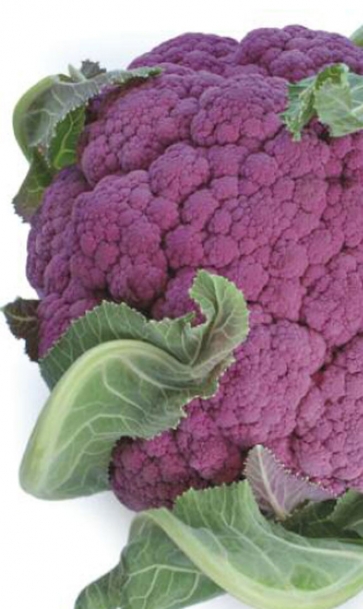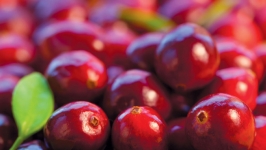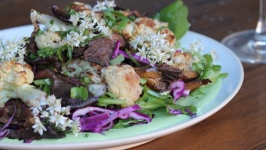Purple Cauliflower: A Treat for the Eyes as Well as the Taste Buds
When shopping at farmers’ markets, I often stumble upon familiar-looking vegetables cloaked in exotic colors—green zebra tomatoes, purple potatoes, yellow lemon cucumbers and black radishes, to name a few. Cauliflower, a readily available but mostly unpopular member of the Brassicaceae family, comes in several eye-catching colors: light green (with funky-looking spikes), orange, traditional white and, my favorite—purple.
Serving purple cauliflower is a great way to add color to any meal and with some purple on the plate, you might even persuade your kids to eat this delicious and underappreciated vegetable.
Cauliflower is a cold weather crop with a fibrous texture, tasting slightly bitter when raw and kind of nutty when cooked. It grows wrapped inside enormous green leaves that encase the head. For white cauliflower, farmers are known to tie the leaves together over the heads for the duration of growth to prevent them from yellowing. When purple cauliflower is ready to harvest, the leaves pull away, revealing a vibrant purple gem inside.
Purple cauliflower’s hue derives from anthocyanins, which are pigments that enable the colored cauliflower to better tolerate sunlight. Anthocyanins are thought to make purple cauliflower even more healthful than white varieties because anthocyanins act as a powerful antioxidant. Purple cauliflower is a low-calorie vegetable high in vitamin C, vitamin D, vitamin K and fiber. To store raw cauliflower for up to one week, tightly cover in plastic wrap or in a paper bag, stem side down. It’s best to consume cooked cauliflower within three days of preparing.
Cauliflower is most often served raw, steamed or roasted and can be made into a silky smooth purée in the food processor with a little butter and cream. The accompanying recipe is a great introduction to the joys of cauliflower—it’s incredibly simple and allows the natural sugars to caramelize and the flavors to intensify. After serving it to my 95-year-old grandmother, she said she was cured her of all of her reservations about vegetables. The thyme and olive oil mask any deterring bitter characters, leaving only the pleasant, nutty and salty flavors that complement the softened stalk and slightly crispy florets.










